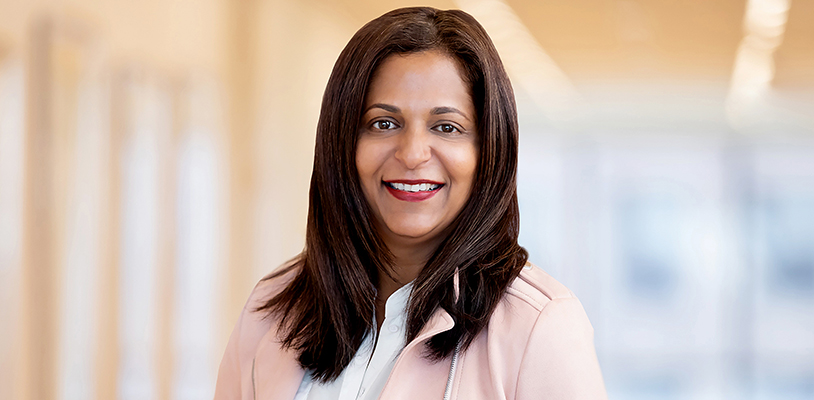We already know that the increasing number of inspiring women at the top are having a measurably positive impact on business. Recent studies looking at three critical financial measures show Fortune 500 companies with the highest representation of women board directors attained significantly higher financial performance on average than those with the lowest representation of women board directors. Measures include: 1) return on equity - companies with the highest percentages of women board directors outperformed those with the least by 53%; 2) return on sales – companies with the highest percentages of women board directors outperformed those with the least by 42%; and 3) return on invested capital - companies with the highest percentages of women board directors outperformed those with the least by 66%. It’s essential to build on this and continue to drive gender equality.
But how can we build on their success and drive gender equality forwards? Here are 5 lessons we can learn from diverse female business leaders, running companies all around the world, and the work they’re doing to build an equal world…
- Gender equality = growth
One of the key lessons I learnt as CEO of multiple European companies and in writing my book The Trillion Dollar Shift is that not only is achieving gender equality an essential human right – it also has the ability to unleash a range of positive economic and development outcomes.
In the majority of the world’s wealthiest countries, women are still not paid the same amount as men. In the US, for example, on average a woman makes 80 cents for every dollar a man earns. What a man makes in 12 months, a woman must work 15 months or more to earn the equivalent amount. The additional output generated by decreasing the gap in employment between men and women could drive the wider economy and US$12 trillion could be added to global GDP by 2025 by advancing women’s equality. It is further estimated that US$28 trillion would be added by that date if women were to play an identical role to men in the labour markets.

Sonia Syngal. CEO of Old Navy // Photo: Benzeeful, Wikicommons
With new business opportunities arising due to the catalysts for implementation of the UN’s Sustainable Development Goals for a better world by 2030, there is an increasing need to drive gender participation as well as women’s contribution in the workforce and access to education. For companies, gender-diversity likely 1) increases market share, as companies are 45% more likely to witness market share growth; 2) grow market size, as companies are 70% more likely to successfully capture new markets; 3) enhance equity, as companies are likely to achieve 53% higher returns on equity.
- Put equality at the core
Sonia Syngal joined Gap in 2004 and became one of the few female CEOs of a Fortune 500 company when Gap, Inc. made Old Navy into its own publicly listed company in 2019. She believes ‘progress means equality’ and worked hard within Gap, Inc. to help put gender equality at the heart of the business.
Gap shows how gender equality can pay dividends both for their core business, as well as for society at large. It is the first and only Fortune 500 Company to disclose and validate its pay equality practices. Women make up 73% of the Gap, Inc. workforce, including store managers and the CEO’s leadership team. In 2014 Gap, Inc. displayed unprecedented transparency by releasing data confirming that women and men in their workforce are paid equally across all company facilities.
The Gap Inc. P.A.C.E. program (Personal Advancement and Career Enhancement) was designed as an education program offering life-skills classes to female garment workers. The curriculum provides 80 hours of instruction in nine subject areas including communication skills, financial literacy, time and stress management, and problem-solving and decision- making. Since GAP launched P.A.C.E. in 2007, more than 50,000 women in 12 countries have participated in the program. Overall, participants reporting higher self-esteem rose by 49% by the end of the program, while women reporting improved self-efficacy and belief in their ability to produce desired results increased by 150%.
Syngal believes it’s essential to “Operate with integrity. Find a place to work that has values that align with your own. Demand equality” and “empower those around you - the leaders of tomorrow - to raise their voices.”
- Tech is key
Elsamarie D’Silva is a social entrepreneur and the founder and CEO of Ushahidi, a groundbreaking company based in Nairobi who created SafeCity. After spending 20 years in the aviation industry she made a career switch in 2013 to focus on empowering women. Her work shows how essential it is to have women working at the forefront of the tech industry and how successfully we can deploy tech innovations to drive gender equality.
SafeCity uses Ushahidi technology to help make cities in India safer for women, giving them a way to anonymously and safely report on harassment and abuse. UN Women states that 1 in 3 women face some kind of sexual assault at least once in their lifetime, and in India, a rape occurs every 20 minutes. SafeCity has gathered nearly 10,000 reports over the past few years. This real-time reporting of danger or potential danger to women has allowed SafeCity to advocate for more street lighting, awareness campaigns, and improved city resources to protect women. D’Silva’s work and the tech she is deploying is helping to bring transparency to human rights abuse of women in India.
- We need action not words
Rose Stuckey Kirk is President of the Verizon Foundation and global technology company Verizon’s Chief Corporate Social Responsibility Officer. She says this is the combination she ‘craved - to be a part of a company that is helping people and the planet because it is the right thing to do and good for business’. Verizon embraces a shared value approach, it is pioneering technology products and solutions that provide “powerful answers” to pressing problems facing society. The company has coined its own philosophy: Verizon “Shared Success”.
Verizon believes that to compete for the jobs of the future, it is essential for every child to have access to technology and STEM (science, technology, engineering and math) education. Therefore, Verizon developed the Verizon Innovative Learning Schools (VILS) program, committing US $160 million in free tech, free access and hands-on immersive learning in STEM for students in need. Verizon does not simply fund these programs, it also creates and administers them. The company also has a diligent measurement system to test the impact of its work and to refine programs.
Stuckey Kirk says: “The individuals who have influenced me the most are the innovators—the leaders and change-makers who are pulsing the world forward. Those who don’t just talk—who act. They innovate because they want to lift up everyone around them.”
Marga Hoek is a global thought-leader on sustainable business and the author of The Trillion Dollar Shift, a new book revealing the business opportunities provided by the UN’s Sustainable Development Goals. The Trillion Dollar Shift is published by Routledge, priced at £30.99 in hardback and free in e-book. For more information go to www.margahoek.com











